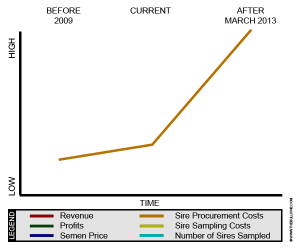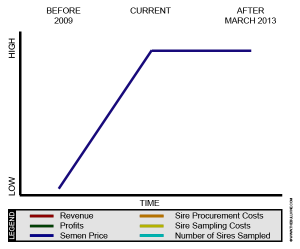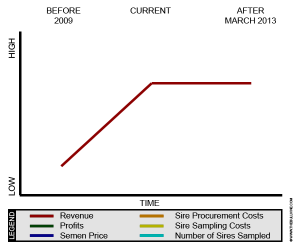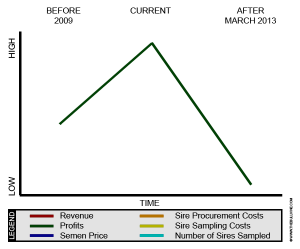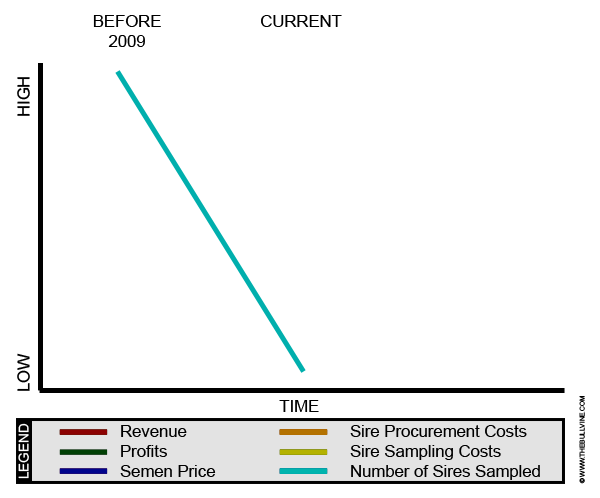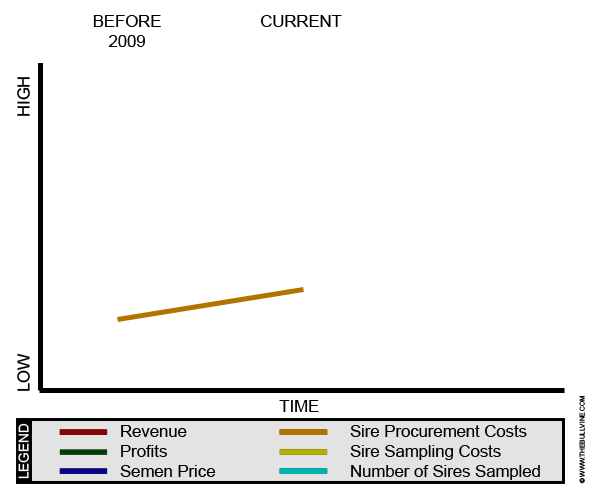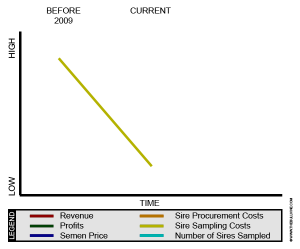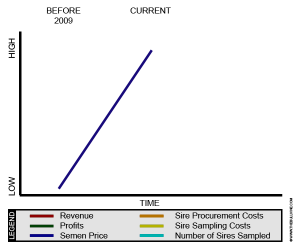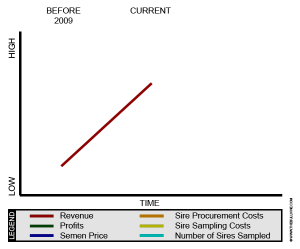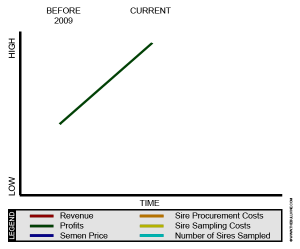There is no question dairy breeders as a whole are a very passionate group. For the most part, it’s not a “line of work” you get into for the money. Between the equity burden and the long hours, it also doesn’t appear to be a “sexy” choice in the opinion of outsiders looking into the industry. But the one thing that all those who are in the industry know is that breeders are also extremely loyal. And the one area where most breeders demonstrate this insane loyalty is to the A.I. companies they purchase their semen from. They pretty much bleed the colors of the A.I. company they support.
Such brand loyalty is something companies like Apple and Coke would die to have. While these two massive global brands spend billions in marketing to build brand loyalty, A.I. companies have done it in a very different way. They have done it through generation after generation of brain washing. That’s correct brain washing.
Is there any difference in the major A.I. companies?
Recently my staff was working on some brand research for GE and I gave them the exercise to look at the Artificial Insemination market and look at each of the major A.I. companies and tell me how each company was different. You know what they found? Nothing! For the most part they are all within 5% of each other for product offering. While some do offer a few more services, they all, for the most part, offer the same service.
This really got me to thinking, and remembering my days of running the roads selling semen. It actually made sense. When I went into herds that were well established and had been operating for generations, they pretty much bled the color of their local A.I. cooperative. However, when I went into herds that were new to the industry or herds where the operators came from other countries, I found them much more open to what I had to say.
While many of the companies are trying to position themselves differently in the market like Wal-Mart, Apple and Amazon in reality there really isn’t any difference. (Read more: A Wake-Up Call to All A.I. Companies) Even in our article, Semex – The Rise and Fall of a Semen Empire, we highlight how Semex grew rapidly and developed an extremely loyal following around the world by being different, by breeding “the Canadian Kind”. However, as they got bigger they started to lose their focus on what made them different and now from an outsider looking in it would appear to be no different from all the rest.
Thinking about this I wonder how much breeders are limiting their genetic advancement due to loyalty to a certain A.I. company? Yes there is not a great difference when you average out the top sires from each company, but why do you seek to be average? Wouldn’t it be best to just use the best each company has to offer and forget the rest?
I think part of the problem is that there seems to be very little difference between the top sires. Something I was shocked to see is that Canadian Dairy Network actually accentuates the issue. Instead of promoting how the LPI formula was better at spreading out the top sires and differentiating them, they actually adjusted the formula to make them all closer?
Now I have had it said to me that this was done at the request of the large A.I. companies because they wanted to sell more proven sire semen and needed the genomic test sires to look less attractive. There is some logic behind this, because young sires do produce less semen and there always seems to be a limited supply (Read more: $10,000 a dose Polled Semen and $750 Dollar Semen! Are you crazy?). But the breeder in me says, “What’s more important marketing semen or genetic advancement?”
The Bullvine Bottom Line
Sure the A.I. companies will give you nice hats, maybe even a few coats and shirts, but is that enough to trade your future for? As we have more and more options of companies to purchase semen from, and more and more ways to purchase the semen, I ask you three important questions. ”How much of your semen purchase is dictated by tradition or brand loyalty?” Moreover, “Is your decision based on what is genetically best for your herd?” And finally “Who bleeds for your bottom line?”

Get original “Bullvine” content sent straight to your email inbox for free.







